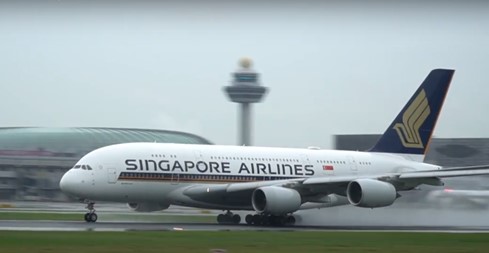


With travel recovering across the world, the plane that had been written off as an oversized relic when Covid-19 devastated aviation has been enjoying an unlikely revival. To handle the overwhelming rebound in air travel with a stretched workforce, some airlines have turned to the A380 as a solution.
Various airlines have brought their A380s out of storage and given them a new lease of life, to keep up with the recent surge in international travel demand. According to a recent article published by the Centre for Aviation (CAPA) in July 2022, the number of A380s in service has been rising quickly and will continue to do so this year. In the Asia-Pacific region, 22 of these aircraft were in service in July and the number will continue to climb through the rest of this year. In particular, Singapore Airlines, the first airline to fly the A380 back in 2007, is currently the region’s largest operator of A380s, with 10 in service.
While plane spotters might rejoice at the higher chance of spotting the superjumbo at Changi, what does this mean for the airport and how different is it to turnaround such a large aircraft, compared to a normal wide body plane? Changi Journeys finds out.
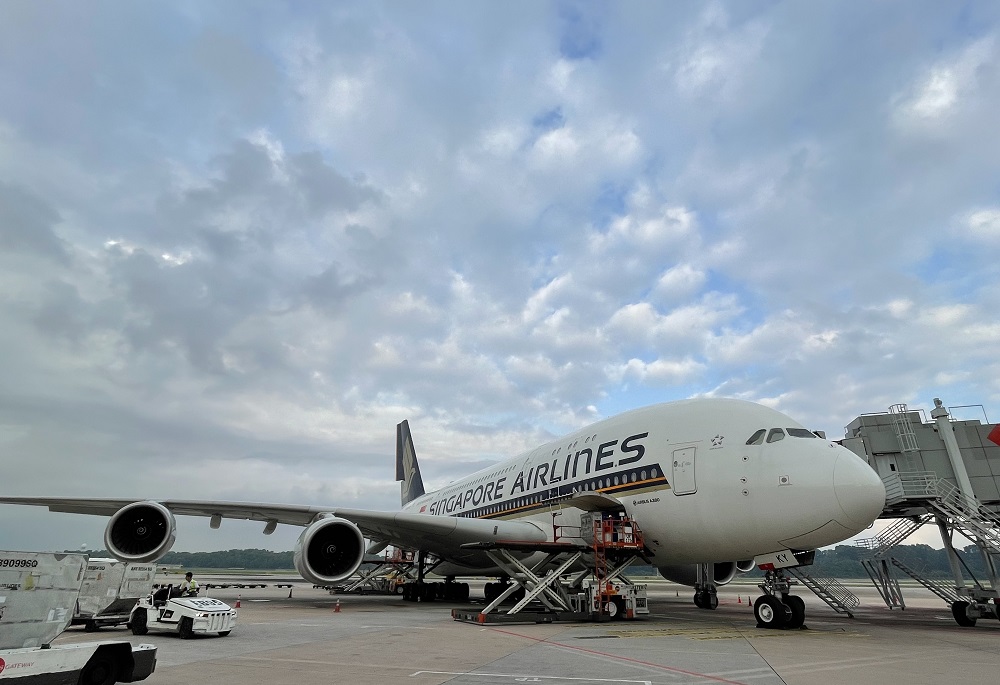


Compared to a normal wide body plane, an A380 requires more ground equipment to be deployed for the flight’s turnaround.
More resources on ground
For starters, more resources are required on the ground to turn around such a large aircraft, as a A380 flight typically seats approximately 500 passengers. A normal wide body plane, such as an A350, requires about two baggage tractors on ground, to ensure that cargo and luggage from the plane gets offloaded within the required time frame upon the plane’s arrival. For the A380, they would require an additional baggage tractor to handle the extra load.
Furthermore, as the A380 is much higher than a normal plane due to its upper deck, two more special hi-lift catering trucks would also need to be deployed, to deliver the inflight meals to the upper deck of the plane.
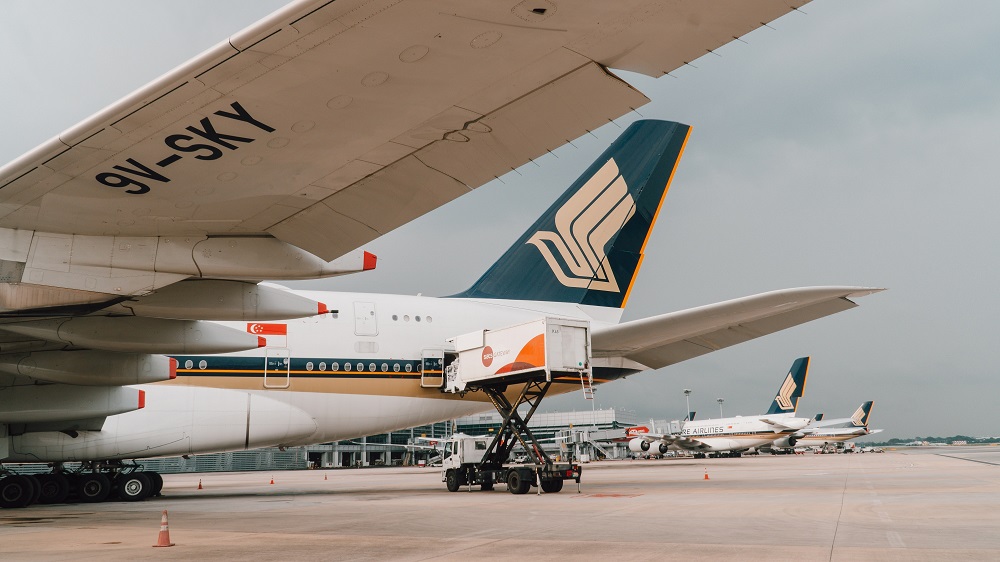


Besides the typical inflight catering truck seen here, which can only reach the lower deck of the A380, the superjumbo requires the support of two hi-lift catering trucks, to enable inflight meals to be delivered to the upper deck.
Special procedure for docking the passenger loading bridge
Besides more manpower and ground support equipment needed for the flight’s turnaround operations and cleaning, there is also a special procedure for the passenger loading bridge (PLB) operator to follow when docking the PLB – the gangway connecting planes to the terminal building.
To ensure that all three PLBs connect properly in such close proximity, the upper deck PLB needs to be moved from its ‘parked position’ location to its ‘pre-position’ location before the flight arrives, to get ready and be in the right place for the plane’s docking.
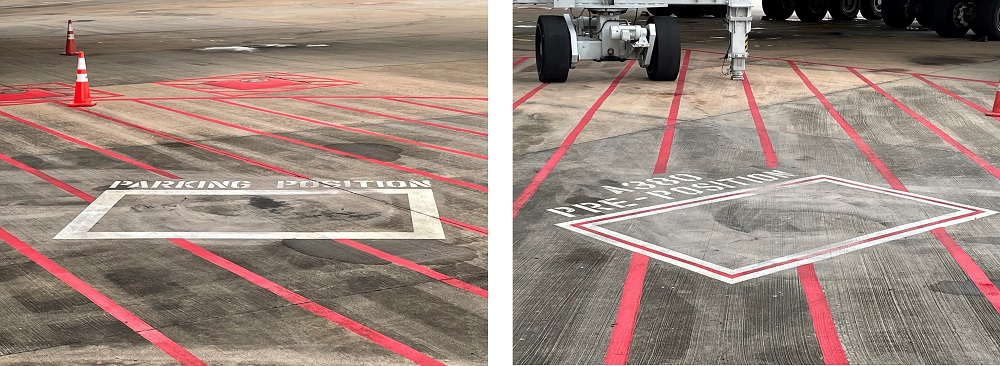


The PLB operator needs to standby before the flight touches down, to position the upper deck PLB from its ‘parking position’ (left) to its ‘pre-position’ (right) to get ready for the plane’s arrival.
Thereafter, the operators follow a specific sequence by manoeuvring PLB arm 1 then 3, followed by 2 to dock them. This sequence is necessary as docking PLB arm 3 first before 2 creates more room to enable PLB arm 2 to manoeuvre.
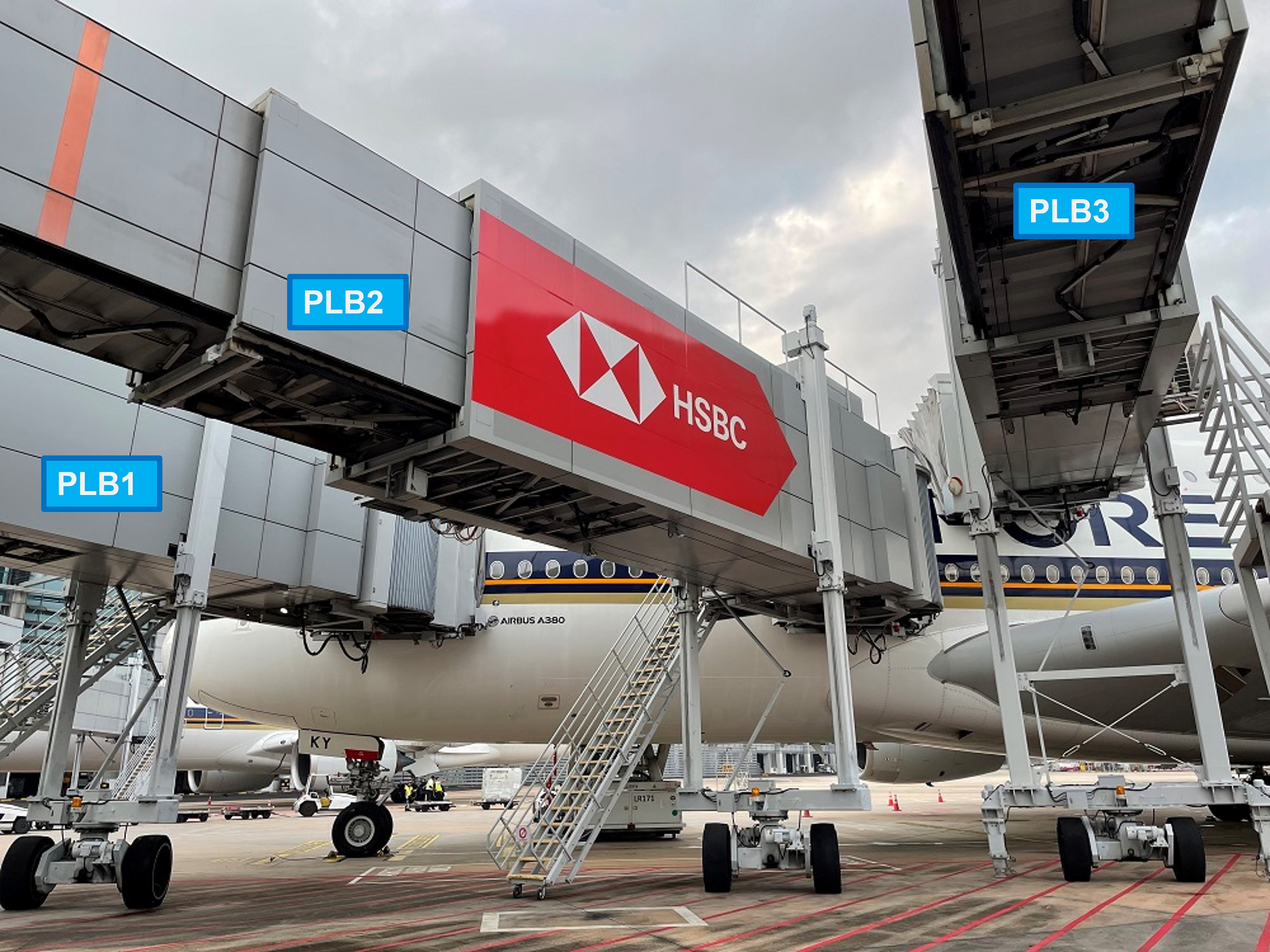


Only the A380 requires three PLBs - two for the lower deck and one for the upper deck. During docking, PLB1 docks first, followed by PLB3 and lastly PLB2
Still confused by how it all works? Watch the video of an A380 being turned around below!
What does the future hold for the A380?
Going forward, the arrival of newer, more fuel-efficient aircraft may pose an existential threat to the superjumbo. But for now, there is a viable role for this giant in some airlines’ international networks, as the range and capacity of the A380 is a good match on certain trunk routes.
As travel continues to resume and travellers seek to fulfil their wanderlust, the A380s will continue to feature in Asia-Pacific networks for the foreseeable future, although for most airlines, it will likely be a scaled-back fleet.
Other Articles

Enjoy a fun and hassle-free trip through Changi this year-end
Beat the queue and be rewarded through a game of Bingo – these are some ways to gain greater control over your departure journey and start your holiday at Changi.
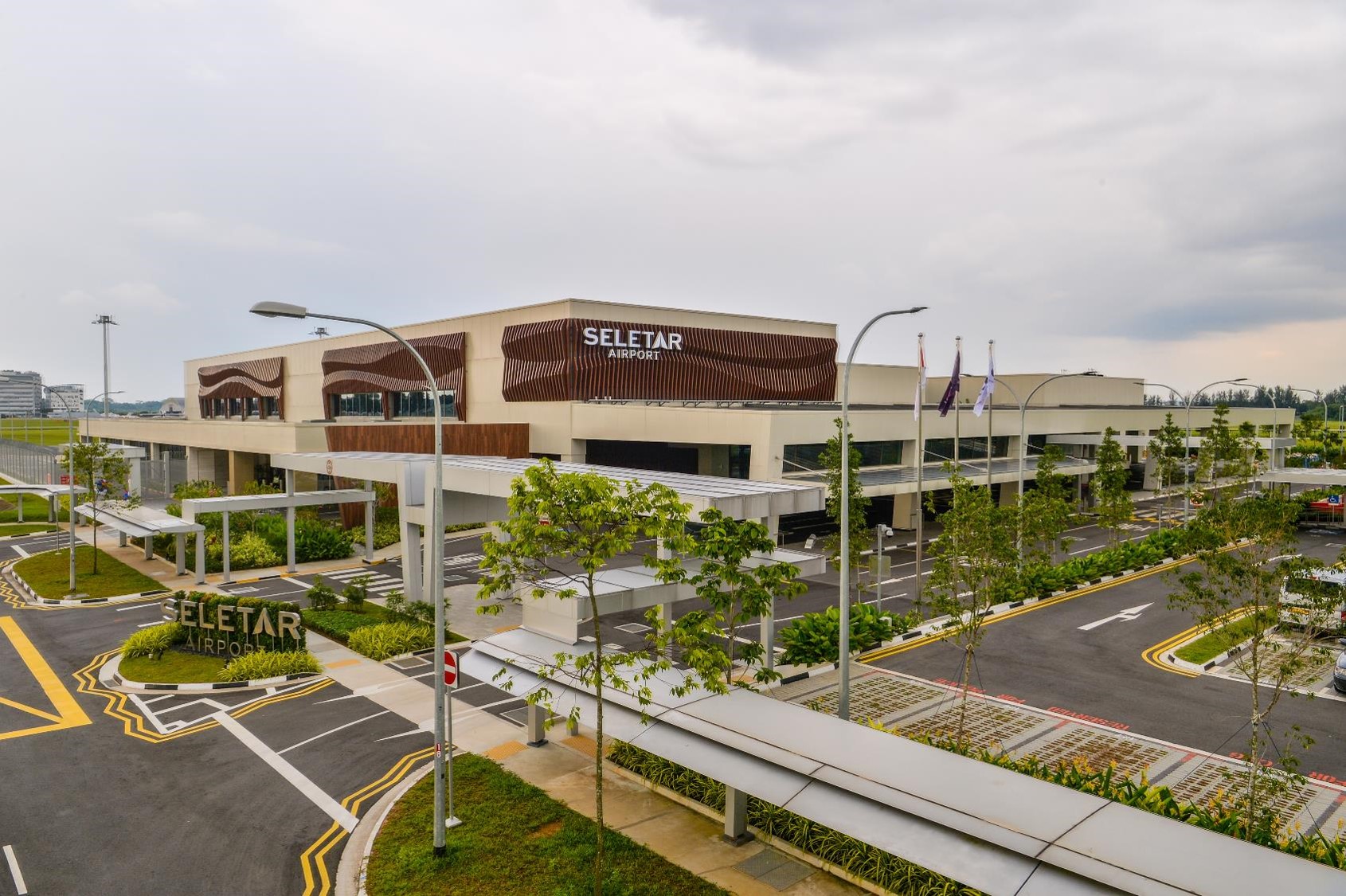
On LinkedIn@ChangiAirport

The design inspiration behind the newly revamped T2
The tranquil journey through T2 brings passengers through natural elements of water and lush greenery in various forms.


